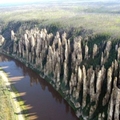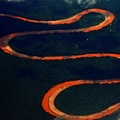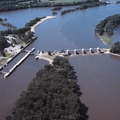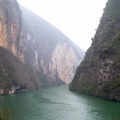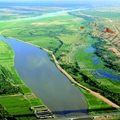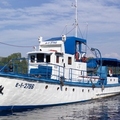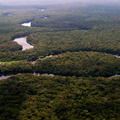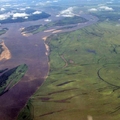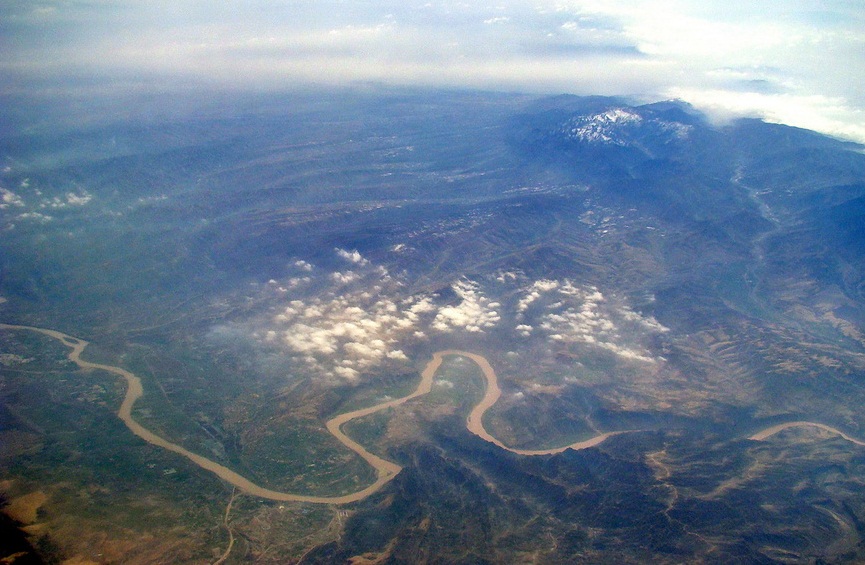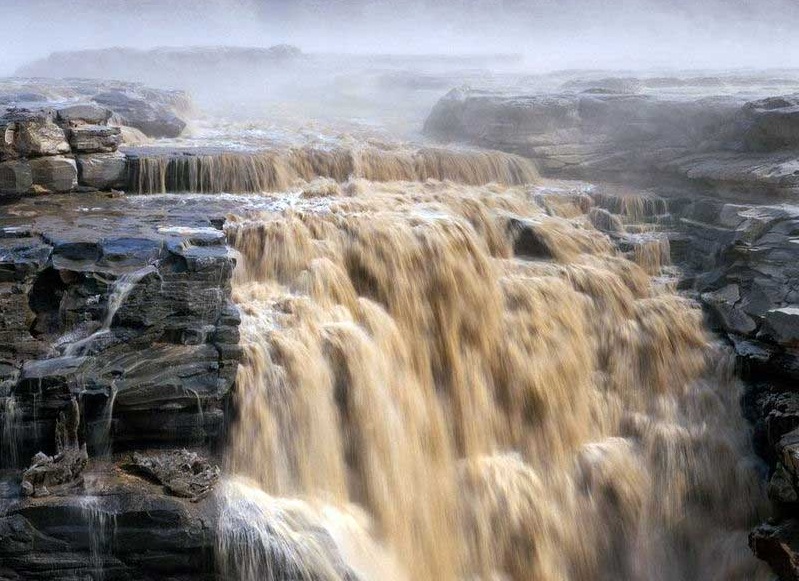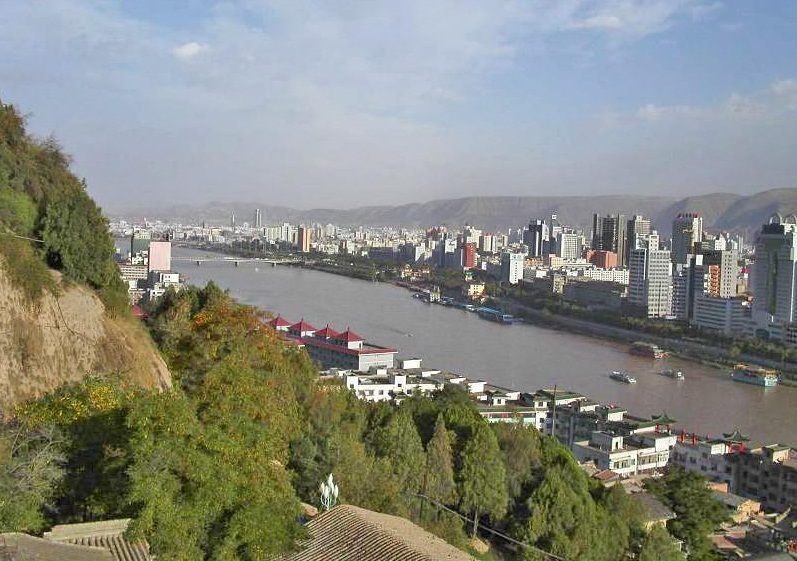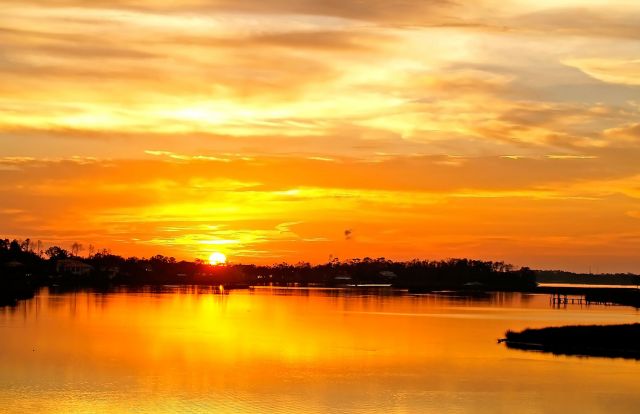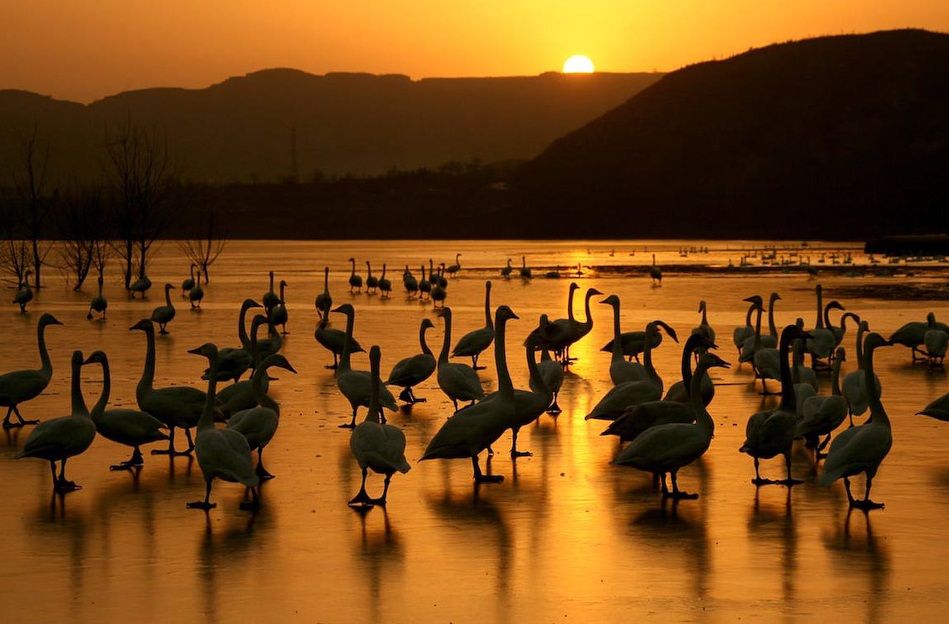Destinations / The Longest Rivers in the World / The Yellow River
The Yellow River
About the Yellow River
Huang is the most obsolete river in China. From Chinese it means the "Yellow River" and it is associated with an abundance of sediments, giving a yellowish tint to its water. It is because of them, the sea, into which the river flows is called Yellow. The Yellow River basin is considered a place of formation and of establishment of Chinese ethnicity.
Origin
The Yellow River originates in the eastern Tibet Plateau at an altitude of 4,000 m and flows through the Orin-Nur Lake and Nur Dzharin and spurs in the Kunlun mountain ranges and Nanshan. It crosses the Ordos and the Loess plateau in its middle reaches of the great bend of the forms, then through the valley of the Shansiyskih mountains goes to the Great Plain, which carries about 700 km to the confluence of the Bohai Gulf of the Yellow Sea, forming a confluence in the delta. According to various data, the length of the river is of 4670 km to 5464 km and its basin area is of 745 thousand km ² to 771 thousand km ².
Interesting facts
This is the fourth of the longest rivers in Asia, although its drainage basin is only the sixth (or the seventh if you count the Ganges basin - the Brahmaputra in India and Tibet) place. The Delta is located about 300 km south of Beijing. It can be reached by road or by rail along most of the river, but some parts of it, especially in the upper reaches, is so readily available that suggests an expedition, not a tourist trip. Well acquainted with it in Lanzhou, where it descends from the mountains on the loess plain. “The poor are like rivers, the rich are like seas. The rivers fill the sea and would hardly get something in return, if not the sun “- Robin Hood. The average consumption of water in the river is about 2,000 m ³ per second. The river has a monsoon regime during the summer flood of water level rising up to 5 m in the plains and up to 20 m in the mountains.
The Mountain of China
The blurring Loess Plateau and the mountains of the Yellow River annually make 1.3 billion tons of silt, ranking on this indicator the first place among the world's rivers. Intense deposition of sediment in the lower reaches of the channel increases, which is located at altitudes ranging from 3 to 10 m above the surrounding plains. In order to protect from flooding the Yellow River and its tributaries are protected by extensive system of dams, the total length being about 5 thousand km. The dam led to huge floods and to the displacement of the channel. This led to the deaths of many people and gave the river the nickname of the "Mountain of China." The maximum recorded movement of the Yellow River channel was about 800 km.
The characteristics of the river
The Yellow River water is widely used for irrigation. There are a number of hydropower plants built on the river. The Grand Canal is connected to the Huai and the Yangtze rivers. The Yellow River is navigable for some areas, mainly in the Great China Plain. The Yellow River valley is densely populated. Among the cities located along its banks, the largest are Lanzhou, Yinchuan, Baotou, Luoyang, Zhengzhou, Kaifeng and Jinan. China is rich in water resources, which have influence on the topographic features. Thus, most of the rivers in China are large, following the terrain, drawn to the Pacific Ocean basin. Particularly the dense network of rivers in the eastern part of China play an important role in many sectors of the economy as a whole and in its individual branches. This is evident in agriculture (irrigation), and large merchant ships go on the rivers bringing goods from a province to another.
Finally, the river is a source of energy, and hydropower reserves of China are ranked first in the world. The reason why rivers and seas receive the homage of the hundreds of mountain streams, lies in the fact that they are below the latter. Because of this they are able to dominate all mountain streams. Likewise, the sage, wishing to be above men, puts himself below them.
The sorrows of the river
However, the river is also a source of disaster. The best example is one of the two great rivers of China – the Yellow River - which carries and prosperity and sorrow to people living along its banks. For many centuries, devastating floods caused hunger and epidemics. Many built dams designed to pacify untruly nature of the Yellow River, but they are not able to completely prevent floods, when, sweeping away everything in its path, the river rushes to the south. The Yellow River is rich in natural resources. In this regard, the following questions were born: what are the characteristics of the Yellow River? What is its significance for China? What is the role it plays in industry, agriculture, and the economy as a whole? What problems exist today, and what are the solutions?
The Yellow River got its English name "Yellow River" for the color of the water-rich in silt that washed out of the loess soil from the area in which it occurs. The Chinese name is Huang translates as "the sons of the mountain Khan", which points to the frequent flooding of the river, threatening the destruction and losses to people living along its banks. It is known that in the last two thousand years the river came out of the coast and at least 20 times changed the trajectory of the channel thousands of times.
The Great China Plain
No wonder why people called it "the river thousands of grief." The most dangerous area in all the Yellow River is the Great China Plain, where the river slows its flow and spreads widely, and sometimes the level of the river is three meters above the surface of the plains. It is most prone to periodic large floods. But, like many other large rivers, it gives new life to the fields, because the water is retreating after the spill leaves a significant portion of fertile loess, collected upstream. However, the Yellow River is certainly one of the muddy rivers in the world. Thus, it carries about 26 kg of silt per cubic yard of water, and spills rivers up to 544 kg. This shows that the rate of the flow of the river is relatively high, without losing speed even when passing through the extensive irrigation systems in the plains.
The problems of the Yellow River and its importance for the provinces of China
Since ancient times the north-western regions suffered from the blown sand. Thus, in the middle reaches, the Yellow River had an intensive soil erosion. This was due to the dam on the river, which flooded vast areas in many areas. There were many natural disasters (droughts, floods, locust attacks), and the fields were overgrown with weeds. Several measures had been taken to restore and to develop the agricultural production. Notable success in the development of the river basins, land reclamation, saline soils, as well as the development of coastal and mountain areas had been achieved. But you cannot just unilaterally say about the Yellow River. Despite the challenges, it plays an important role in the country's agriculture. For example, in Shanxi Province, the Houtao plain was formed by alluvial deposits of the Yellow River and its tributary Daheyhe river.
From time immemorial the peasants began to build irrigation canals here and used for irrigation the Huang’s water. There are many irrigation canals and cultivated fields around even nowadays. The Yellow river plays an important role for the Qinghai province . Thus, the main crops of wheat and barley are concentrated along the banks of the Yellow River in the east of the province. Thanks to the irrigation and to the water in these areas of the river, the farmers receive a stable and high yields of important crops. In the Ningxia autonomous region of Huesca long established network of irrigation canals had not been repaired, which led to the formation of lakes and soil salinity. However, over the past 50 years the situation changed radically. Many irrigation canals had been expanded and restored. As a result, the threat of the soil salinity is practically eliminated, the area of the arable land has nearly doubled, which led to an increase in the agricultural production throughout the region. The arable land is also concentrated mainly on the banks of the Yellow River and the river in this region of China played an important role. However, the Yellow River is important in the transport region. So, for 30 years as it was commissioned the largest-longest highway bridge, greatly facilitates the communication between the shores of one of the great rivers of China.
The Yellow River in the modern world
The study of the Yellow River basin continues till nowadays. The country's first private bridge was held through the Yellow river recently. It was built with money from a businessman Lee Baotyanya , the Shaanxi Province and the local coal company, after going through necessary checks. Ninety six million yuan was needed for the construction of the bridge, but in order to recover the spent money and begin to make a profit, its owners needed, according to the experts, at least 8 years. It is important to note that after the opening of the bridge, the turnover among provinces increased and the cost of cargo delivery reduced.
Our land is a part of our body. The Earth is the body, the river is its veins, and the water is the blood, the forest are the lungs, the ice is our feet, the dams and the levees are our blood clots, the fires are fever, numerous plants and animal species are the cells that make up the body. If we continue further, then the brain is somewhere in the East, the heart is perhaps very far.
A new bridge over the famous river will start to be built soon. Most likely, he will be named after a popular Disney character Mickey Mouse. There is a second version of the name " The Bridge of Coca-Cola." This is due to the fact that the companies Walt Disney and "Coca-Cola" are now included in the list of 50 companies, claiming the right to assign their name to a new high-speed bridge costing more than $ 750 million. However, the Autonomous Region of Inner Mongolia in the coming three years will begin to implement on the territory of 11 counties located in the flow of the Yellow River, the environmental project to establish windbreaks at the expense of Japanese loans in order to improve the environment in the basin. Under the plan, during this period there will be a tree planting on an area of 80 thousand hectares. Deterioration of ecological environment in the areas of the upper and middle reaches of a serious impediment to sustained economic and social development. It is important to note that there are many more such projects which are currently being considered by the Committee for Water Resources.
The Yellow River and its features
The Yellow River basin has huge reserves of coal, iron, copper, aluminum and oil in its depths. Due to this rapid, developing ,chemical, electrical, engineering and other industries, as well as growing and new industrial areas, such as Taiyuan and Xi'an, Baotou and Lanzhou, Luoyang and Xining bridges like to look at the river from the top down! The rapid growth of these regions requires a significant, rapid growth of energy framework in which the hydropower will have dominant positions. It is important to note that the high costs and the significant slope of the river of its channel determine the presence of significant hydropower resources. The study of the Yellow River water power has only just begun, but it was already identified with some particularly rich hydroelectric power stations of the river. Large reserves of water power poses the river in its upper reaches, where it is different over the rapid and the significant slope of the channel. The bed of the Yellow River is often compressed with mountain ranges, the Yellow River flows through narrow and deep mountain gorges. The greatest reserves of hydropower resources are in the area of one gorge near Lanzhou.
Water- the meaning of life
The river narrows to 52 feet and forms a waterfall at a height of 17 meters, where a hydroelectric power station can be constructed. In Lunmynya, the Yellow river runs along the gorges for fifty miles, sandwiched by steep cliffs to a height of several hundred meters. The speed of the river is quite high here, and that's why the Lunmyn gorge is one of the richest regions of China’s hydropower. Near the mouth of the river, where it is a particular full-flowing, a deep canyon Syantansya was formed. Stocks of the second river water power were concentrated in the upper reaches of the river, especially near the cities of Baoji and Tianshui. A major source of hydroelectric power is the Yellow River and the Sanmynsya area ("Gorge of the three gates"). The river flows here through three deep canyons. You may sit with a fishing rod on the bank of the river, and then pass by with its charter. It is important to note that little rainfall relatively falls, with peaks in years when, in some areas 700-800 mm per month fall in the Yellow River basin. There are heavy rains, causing summer and autumn floods. In the areas where the river flows from the south to the north, there are times when the south is a thaw and in the north ice is still holding. As a result, the channel becomes clogged with floating ice floes, the water level rises sharply, which also causes damage to people. However, in Shaanxi province, the Yellow River empties into many tributaries, and if the cyclone covers a wide area and the water level rises in several tributaries, the catastrophe is inevitable.
Life is like a river where people are swimming against the tide. Some of them shovel to the beach. A particular lucky part of people manage to get into the root. Desire is the so-called river, where the waves are instead of dreams and the thirst is lurking in its crocodile passion instead of water, and the crows are circling above its troubles.
Do you hear how well does it ring? Almost as well as the other coins. You can swear that it is gold. I caught it this morning, just as caught, according to him, the shopkeeper, gave it to me. It does not have the desired weight, it seems to me, but it shines.
Dams
The plan provided the construction in the main channel of the Yellow River water-lifting three dams: Taohuayuy (Henan), Dukoutan (Inner Mongolia) and Tsintunsya (Ningxia Hui Autonomous Region). Upon the completion of the construction of these dams, the irrigated area was increased by more than 2,000 hectares.
Thus, the Yellow river is very important for irrigation and for many other reasons as fishing and cruises. For lovers of cruises the river is very demanding for tourists who prefer active rest, but in very comfortable conditions. Luxury and the highest level of service are integral parts of a cruise travel on the river. The river offers the most interesting and significant routes on the globe.
Others The Longest Rivers in the World .
Others from The Longest Rivers in the World
Everyone dreams to visit at least one of these places.
Those who live in modern cities with tall buildings tend to lose what Mother Nature has to offer.
They say "beauty is in the eye of the beholder," and there are probably many places that you consider to be most important in the world.
To our mind, rivers are very important and they offer splendid, natural views that Mother Nature offers.
Water is one of the most precious natural resources , we cannot live without it.
Globally, water supplies are rare: less than 1% of the world's water is good for consumption, and much of it, 2/3 of the Earth’s surface is covered by rivers and salt waters.
A river is formed from the union of several streams which naturally flow downhill , under the effect of gravity , which either flows into another stream or river ( its tributary ) or in a lake , a sea or an ocean .
For this reason we do not pretend that our list of places included are the most beautiful, but rather among the vast collection of the longest and the largest rivers in the world.
1 - Nile - 6600 km, the most beautiful areas of the basin downstream waterways are in Aswan.
2 - Amazon - 6480 km, the largest river basin in the world, cruises are up to Iquitos.
3 - Yang Tse Kiang - 6300 km downstream from the dam cruises.
4 - Mississippi - 6280 km, one in four Americans living around the pool's third largest river in the world, every city on its banks proposes at least one cruise.
5 - Yenissei - 5540 km, navigable by small portions, is the longest in Russia.
6 - Huang He (Yellow River) - 5464, with most cruises in China.
7 - Ob Irtchych - 5410 km, one of the 120 rivers that cross Russia.
8 - Congo - 4800 km, the second largest river basin in the world that flows, in sequence with Amazon, African adventure for the brave.
9 - Amur - 4500 km, navigable river, it crosses Russia and China.
10 - Lena - 4400 km, the most eastern of Russian rivers, crosses Siberia from the south to the north and it is one of the most fascinating deltas.
For the lovers of amazing sceneries, these rivers can be the perfect destinations and the cruises the most wonderful experiences.
Cruises have always aroused the curiosity of people even if not everyone can afford such a trip.
If the desire to live new sensations, schedule your vacation early next year and choose a destination that allows you to take a cruise on one of the longest rivers in the world.

